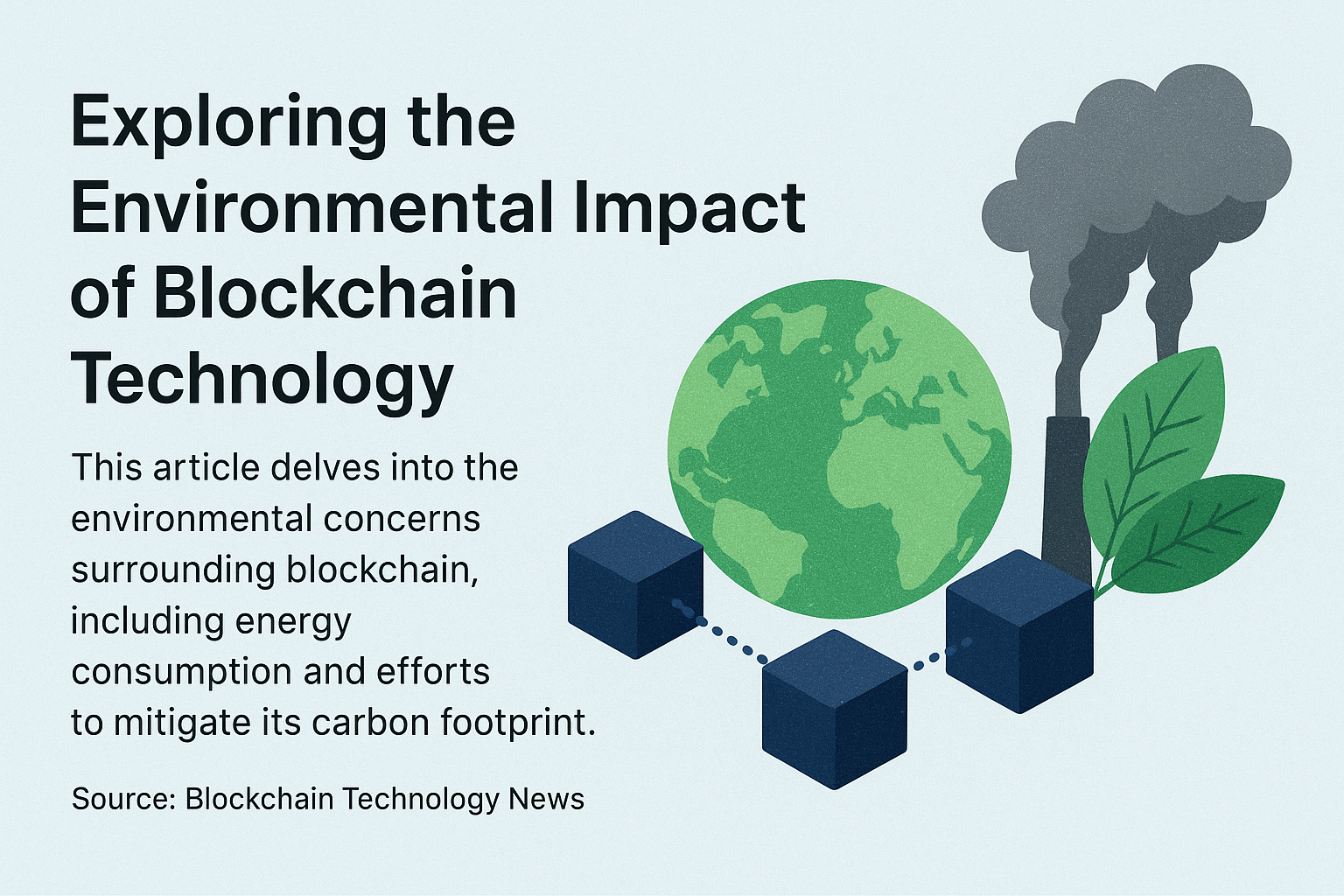Blockchain technology has become synonymous with innovation, decentralization, and the promise of reshaping industries ranging from finance to supply chains. Yet as its adoption accelerates, so too do concerns about its environmental impact. Much of the conversation centers on the energy consumption of blockchain networks and the carbon footprint created by their operation. Understanding these issues is crucial for businesses, governments, and individuals who want to balance technological advancement with sustainability.
Why Blockchain Consumes So Much Energy
Most blockchain networks rely on a consensus mechanism to validate and record transactions securely. Bitcoin, for example, uses Proof of Work (PoW), which requires miners to solve complex mathematical problems. This process consumes enormous amounts of electricity because it is intentionally resource-intensive to secure the network against attacks. According to recent studies, Bitcoin’s annual energy consumption is comparable to that of some small countries.
This high energy use translates directly into greenhouse gas emissions when the electricity comes from fossil fuels. In regions where renewable energy sources are scarce or unreliable, the environmental cost of blockchain operations can be especially high.
Proof of Stake and the Shift Toward Greener Models
Not all blockchains are equally energy-hungry. Many newer platforms, such as Ethereum after its 2022 “Merge” upgrade, have shifted to Proof of Stake (PoS). This mechanism does not require massive computing power but instead relies on validators who stake tokens to secure the network. PoS has been shown to reduce energy consumption by more than 99% compared to PoW systems.
This shift demonstrates that blockchain and sustainability need not be at odds. As more developers and companies opt for PoS or other low-energy alternatives, the industry’s carbon footprint could shrink dramatically over the next decade.
Mitigating the Carbon Footprint
In addition to consensus mechanism changes, there are multiple initiatives aimed at making blockchain more environmentally friendly:
-
Carbon Offsetting Programs: Some blockchain projects purchase carbon credits to offset the emissions created by their operations.
-
Renewable Energy Integration: Mining operations are increasingly locating in regions with abundant renewable energy sources such as hydropower, geothermal, or wind.
-
Layer 2 Solutions: Technologies built on top of existing blockchains can reduce the number of on-chain transactions, cutting down energy use while maintaining security and scalability.
Real-World Examples of Sustainable Blockchain Projects
Companies and networks are already innovating in this space. For instance, supply-chain blockchains often emphasize environmental transparency, enabling businesses to track the carbon footprint of their products from source to shelf. Meanwhile, decentralized finance (DeFi) protocols are experimenting with green incentives, such as rewarding validators who use renewable energy.
Looking Ahead: Balancing Innovation and Responsibility
Blockchain is still a young technology. As regulators, developers, and users become more aware of its environmental costs, pressure will mount to adopt sustainable practices. Governments may introduce stricter guidelines for energy use, while consumers could favor eco-friendly platforms and applications.
The future of blockchain will likely be shaped by the industry’s ability to innovate without compromising the planet. By adopting greener consensus mechanisms, investing in renewable energy, and promoting transparent carbon reporting, blockchain technology can become a driver of positive change rather than an environmental burden.
The environmental impact of blockchain technology is a critical issue that cannot be ignored. While early systems like Bitcoin set the stage for decentralized innovation, they also exposed the hidden energy costs of this digital revolution. The good news is that solutions exist—and many are already being implemented. By combining technological ingenuity with environmental responsibility, the blockchain industry can chart a sustainable path forward that benefits both the digital economy and the planet.




